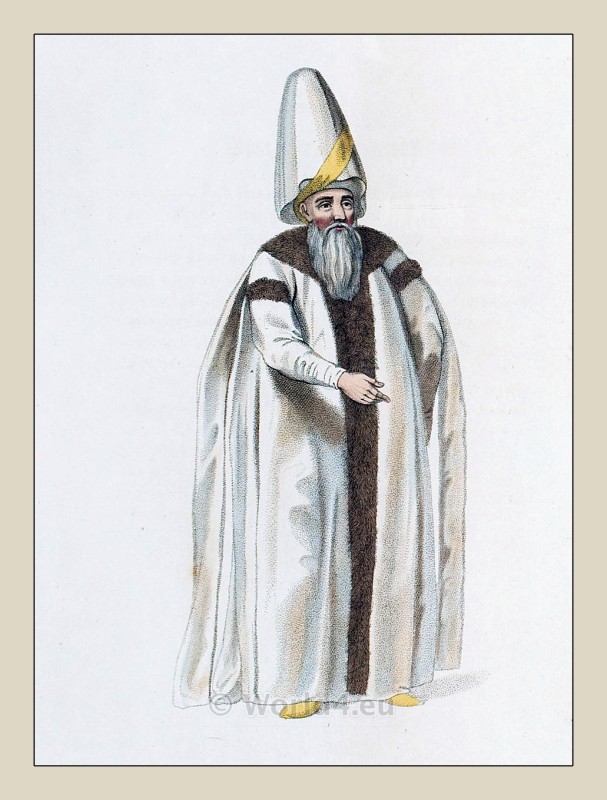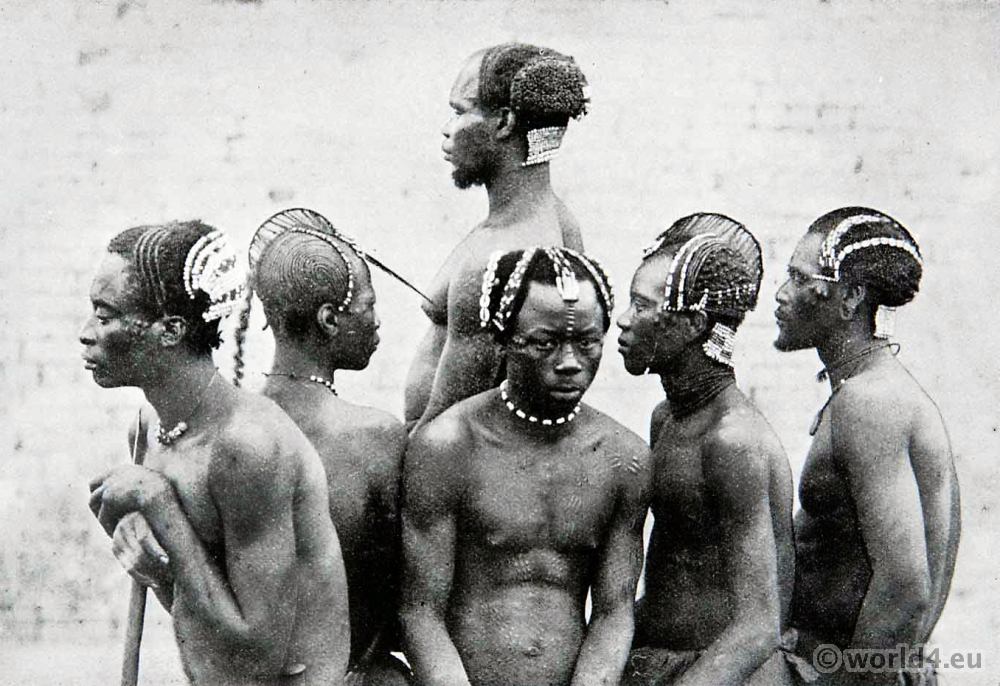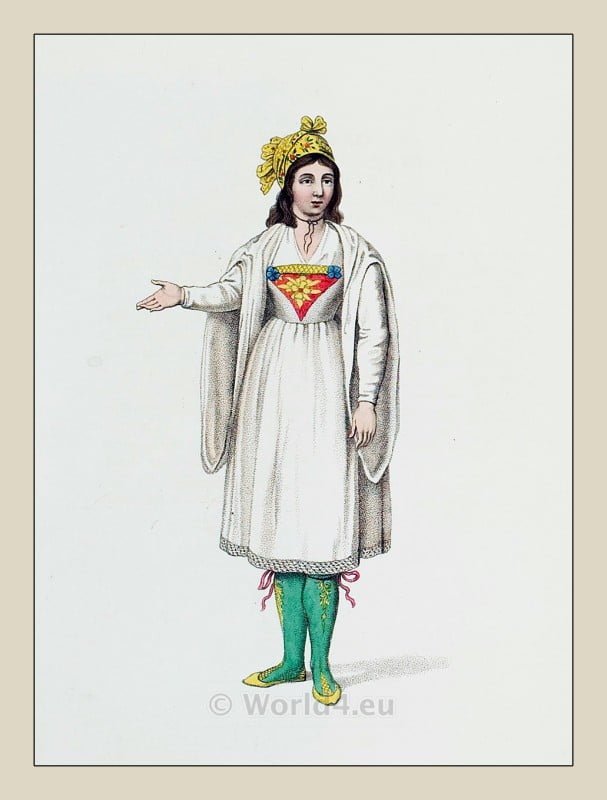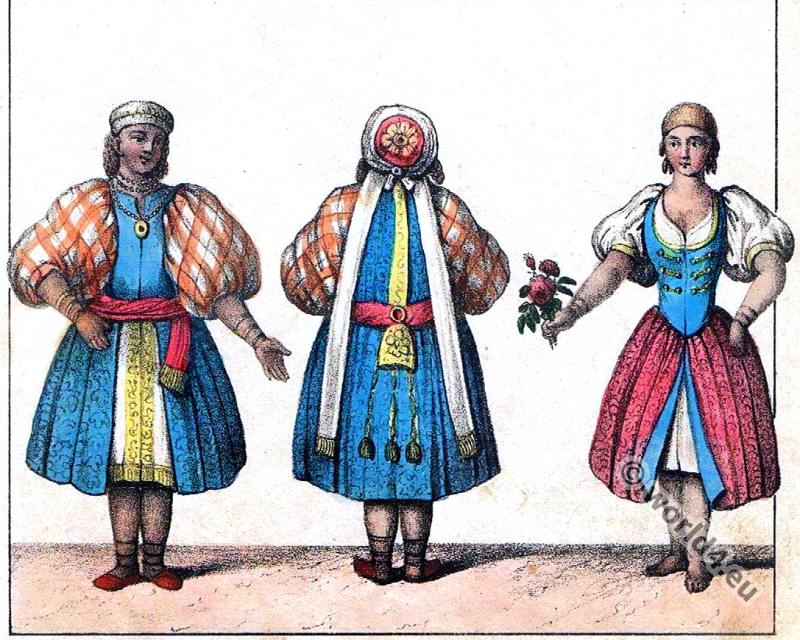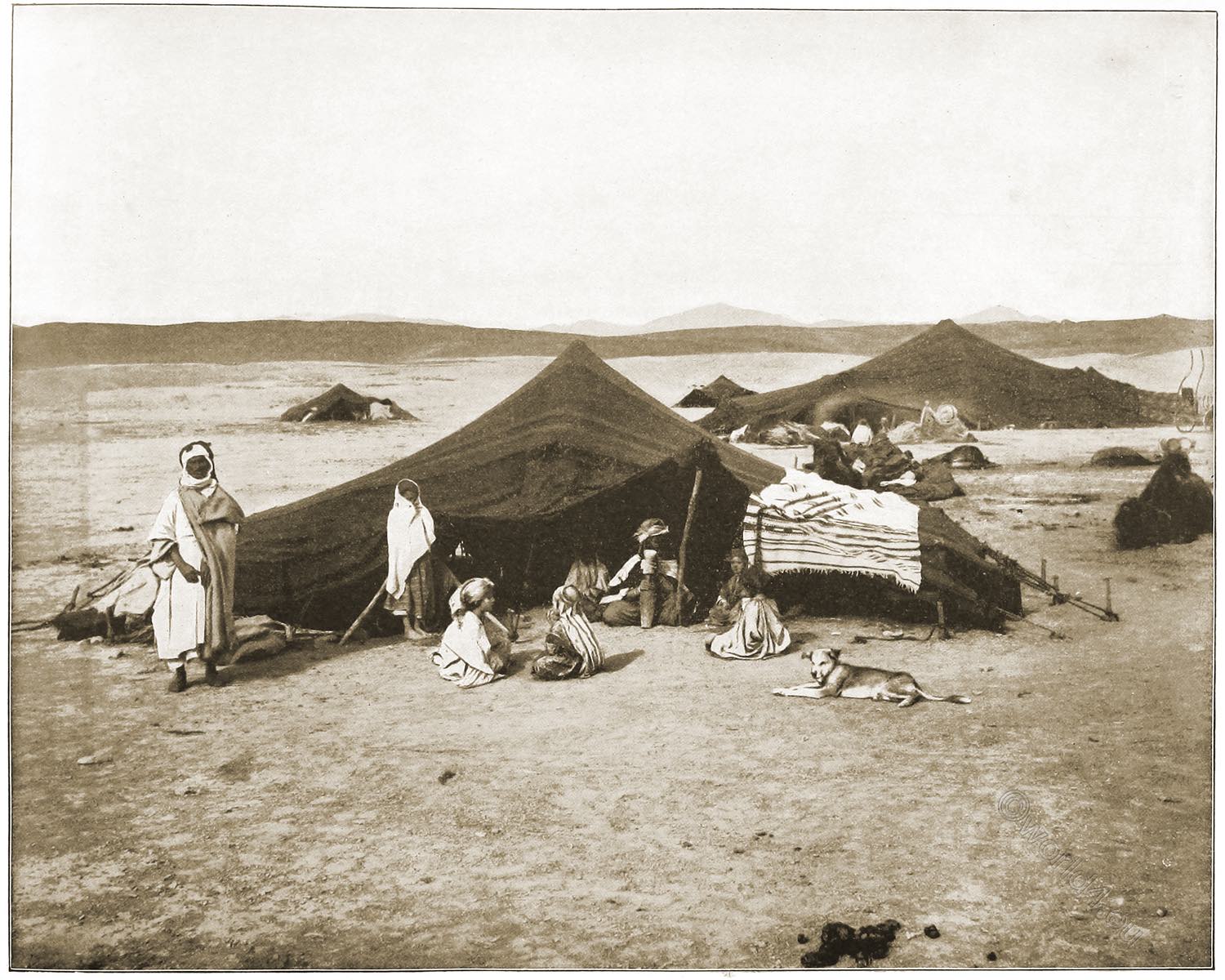
AFRICA. NOMADIC AND SEDENTARY POPULATION OF THE ALGERIAN SAHARA. FEMALE FASHION; THE SHEBKA.
The majority of the population of the Sahara consists of Berbers. They have been pushed inland from the sea coast and have founded cities on the oases of the Sahara, around which the villages and tents of the allied tribes are grouped. Her clothing is extraordinarily rich. They obtain their silk fabrics through the mediation of the caravans; the Jews are almost exclusively engaged in the manufacture of their jewellery from precious metals.
Nos. 1, 2, 3 and 10. Lallas (ladies) from Touggourt.
No. 2: Tunisian turban; false braids; Dumaci, piece of fine linen; calico skirt, flowered. No. 1, 3 and 10. Street costume. Hair dress. consisting of a silk sash and a long veil; false braids; malhafa, wide robe with short sleeves; wool belt; ghamma, coat.
Main parts of the shebka: forehead piece, rich metal work with chains and small coins; large earrings, fixed in the false braids; necklace of raw coral and glass beads; bracelets of silver, sheet metal or copper; large capsules for the talismans (kheurus), agraffes of silver filigree for the belt; rings.
No. 4. Women of the Beni-Saad tribe.
Silk sash wrapped around false hair; long veil; Malhafa and Ghamma.
No. 5. African woman in the service of a Moorish woman: bonnet, forehead piece with pendants; veil and gandura without sleeves.
No. 6. Lalla from Biskra.
Forehead piece, running diagonally into the turban, to which several small chains are attached framing the face; large earrings in false braids; coat attached to the shoulders by two large clasps; tunic and skirt; necklace of coral and pearls; bracelets on silver; rings; long chain with talisman capsule; leg rings and embroidered shoes.
Nos. 7 and 9. Women of the Ouled-Nail nomadic tribe.
Gold embroidered headscarf with veil; black wool braids with large silver rings; skirt, held by silver clasps and chains; wool belt; necklaces of amber and coral; silver rings on wrist and ankle; bracelets of glass beads.
No. 8. Kabyle woman in mountain costume with jewellery.
Ichaun, a hairstyle, with the Thacehd, a silver tiara with enamel and coral; Zeruoiar, large earrings; Gandura with short sleeves; coat, held by the Ibesimas, fibulas; necklaces and bracelets.
Illustrations after photographs. Cf. Eugène Daumas. Le Grand désert; ou, Itinéraire d’une caravane du Sahara au pays des Nègres (royaume de Haoussa), 1861; cf. Le Sahara Algeria.
Source: History of the costume in chronological development by Auguste Racinet. Edited by Adolf Rosenberg. Berlin 1888.
Related
Discover more from World4 Costume Culture History
Subscribe to get the latest posts sent to your email.


